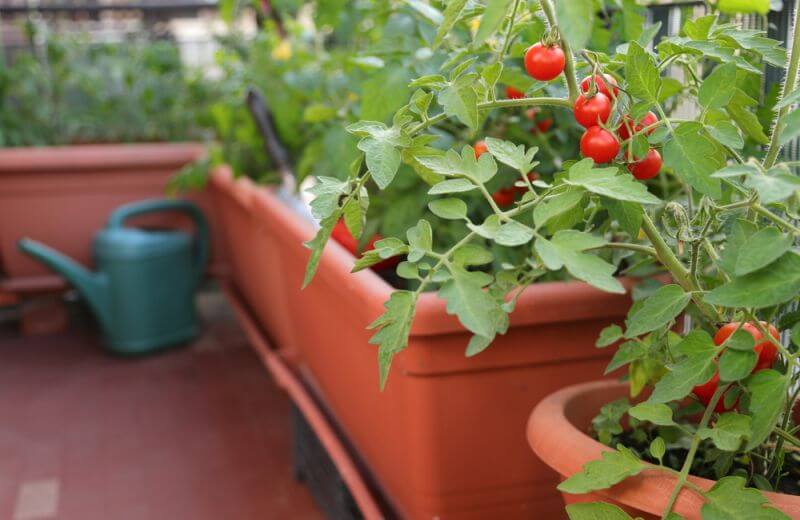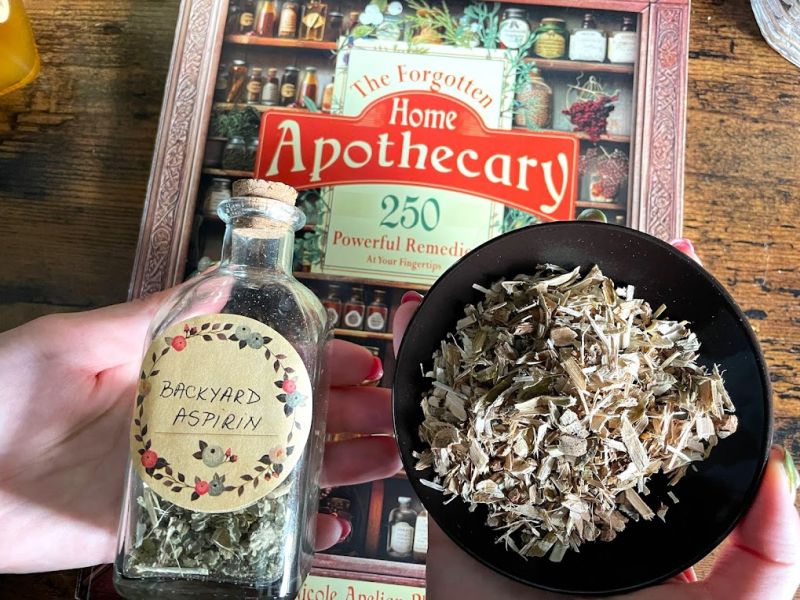When it comes to self-sufficiency, few things are as satisfying as stepping outside and picking fresh food right from your own backyard. For us preppers, growing food-producing bushes are a no-brainer.
They’re low-maintenance, resilient, and can provide a steady supply of nutrients when you need them most. But with so many options out there, which bushes are truly worth the space and effort?
Why Bushes Are a Prepper’s Best Friend
You know what’s great about bushes? They’re like the unsung heroes of the survival garden. Unlike trees, they don’t take years to mature, and unlike annual plants, they don’t need to be replanted every season. Once established, they’re hardy, drought-resistant, and often pest-resistant too. Plus, they can produce food for decades with minimal care.
But here’s the tricky thing: not all bushes are created equal. Some are prolific producers, while others might leave you wondering why you bothered. So, let’s talk about the ones that truly earn their keep.
Blueberry Bushes: The Antioxidant Powerhouse
If you’re looking for a bush that’s both nutritious and versatile, blueberries are a top contender. These little berries are packed with antioxidants, vitamins, and fiber, making them a survivalist’s dream. Plus, they’re delicious.
Blueberry bushes thrive in acidic soil, so if your property has a pH between 4.5 and 5.5, you’re in luck. They’re also relatively low-maintenance once established. Just make sure they get plenty of sunlight and well-drained soil.
One thing to keep in mind: blueberries can take a few years to start producing heavily. But once they do, you’ll be rewarded with a bumper crop every summer. And if you’re worried about storage, don’t be. Blueberries freeze beautifully, so you can enjoy them year-round.
Raspberry and Blackberry Bushes: The Thorny Allies
Raspberries and blackberries might come with a few scratches, but trust me, they’re worth it. These bushes are incredibly productive, often yielding more fruit than you know what to do with. And if you’ve ever tasted a sun-warmed raspberry straight from the bush, you know there’s nothing quite like it.
Both raspberries and blackberries are perennial plants that spread easily, so you’ll want to keep them contained unless you’re okay with a berry takeover. They’re also great for creating natural barriers or hedges, which can be handy for privacy or security.
Here’s a pro tip: plant a mix of summer-bearing and everbearing varieties. That way, you’ll have fresh berries from early summer straight through to fall. And if you’re feeling ambitious, you can turn the extras into jams, jellies, or even homemade wine.
Currant Bushes: The Underrated Superfood
Currants might not get as much attention as blueberries or raspberries, but they’re a fantastic addition to any survival garden. These small, tart berries are loaded with vitamin C and can be used in everything from jams to sauces. Plus, they’re incredibly hardy and can thrive in colder climates where other fruits might struggle.
There are three main types of currants: red, black, and white. Red and white currants are slightly sweeter, while black currants have a more intense flavor. All three are easy to grow and relatively pest-resistant, making them a low-maintenance option for busy folks.
One thing to note: black currants were once banned in parts of the U.S. because they can host a fungus harmful to white pine trees. While the ban has been lifted in most areas, it’s worth checking local regulations before planting.
Gooseberry Bushes: The Old-School Favorite
Gooseberries are another classic that’s been largely forgotten in modern times—which is a shame because they’re incredibly versatile. These tart, slightly sweet berries can be eaten fresh, cooked into pies, or even fermented into wine.
Gooseberry bushes are tough as nails. They can handle poor soil, partial shade, and even cold winters. They’re also relatively pest-resistant, though you might need to watch out for birds. But, honestly, who can blame them? Gooseberries are delicious.
If you’re new to growing gooseberries, start with a variety like ‘Invicta’ or ‘Hinnomaki Red.’ They’re easy to grow and produce reliably year after year.
Elderberry Bushes: The Medicinal Marvel
Elderberries are a must-have for any prepper or survivalist. Not only do they produce clusters of dark, nutrient-rich berries, but they’re also renowned for their medicinal properties. Elderberries are often used to boost the immune system, fight colds, and even reduce inflammation.
But here’s the catch: elderberries need to be cooked before eating. Raw elderberries contain compounds that can be toxic, so always cook or process them before consumption.
Elderberry bushes are fast-growing and can thrive in a variety of conditions, from full sun to partial shade. They’re also great for attracting pollinators, which can benefit your entire garden.
Hazelnut Bushes: The Nutty Necessity
When it comes to long-term survival, nuts are a fantastic source of protein and healthy fats. And hazelnut bushes (also called cobnuts or filberts) are one of the easiest nut-bearing plants to grow.
Hazelnut bushes are compact, making them ideal for smaller properties. They’re also relatively low-maintenance and can start producing nuts in just a few years. Plus, they’re wind-pollinated, so you don’t need to worry about attracting bees.
One thing to keep in mind: hazelnuts are a favorite of squirrels and other wildlife, so you might need to take steps to protect your harvest. But if you can outsmart the critters, you’ll have a steady supply of nutritious nuts for years to come.
Sea Buckthorn: The Unsung Hero
Sea buckthorn might not be a household name, but it’s a powerhouse of nutrition. These bright orange berries are packed with vitamins, antioxidants, and omega fatty acids, making them one of the most nutrient-dense fruits you can grow.
Sea buckthorn bushes are incredibly hardy and can thrive in poor soil and harsh climates. They’re also drought-resistant, making them a great choice for arid regions.
The only downside? Harvesting sea buckthorn berries can be a bit tricky because they’re tightly packed on thorny branches. But with a little patience and maybe a good pair of gloves, you’ll be rewarded with a superfood that’s worth the effort.
How to Use and Preserve Fruits from These Food-Producing Bushes
So, you’ve planted your food-producing bushes, and now they’re bursting with berries, nuts, and other goodies. But what do you do with all that bounty? Here’s a guide on how to use and preserve the harvest from your bushes.
Blueberries
Blueberries are a kitchen superstar. Eat them fresh, toss them into oatmeal or yogurt, or bake them into muffins, pies, and pancakes. They also make a fantastic addition to smoothies or salads.
Preservation Tips
- Freezing: Spread fresh blueberries in a single layer on a baking sheet, freeze until solid, then transfer to airtight containers or freezer bags. They’ll keep for up to a year.
- Canning: Make blueberry jam or preserves. Use a water bath canner to seal jars for long-term storage.
- Drying: Dehydrate blueberries to make chewy, shelf-stable snacks.
Medicinal Uses
Blueberries are rich in antioxidants, which can help reduce inflammation and support heart health. Some studies suggest they may also improve brain function and memory.
Raspberries and Blackberries
These berries are delicious fresh but truly shine in jams, jellies, and syrups. Use them to top desserts, mix into sauces for meats, or ferment into homemade wine or vinegar.
Preservation Tips
- Freezing: Like blueberries, freeze raspberries and blackberries on a baking sheet before transferring to containers.
- Canning: Make berry jam or syrup. Raspberry jam is a classic, but blackberry syrup is a delicious pancake topper.
- Fermenting: Try making berry shrub (a drinking vinegar) or fruit-infused vinegar for a tangy, shelf-stable condiment.
Medicinal Uses
Both berries are high in vitamin C and fiber, which can support immune health and digestion. Blackberry leaf tea is also traditionally used to soothe sore throats and mild digestive issues.
Currants:
Currants are tart and slightly sweet, making them perfect for jams, jellies, and sauces. They’re also great in baked goods or as a garnish for savory dishes.
Preservation Tips
- Canning: Currant jelly is a classic preserve that pairs well with cheese and meats.
- Freezing: Freeze currants in a single layer, then store them in airtight containers.
- Drying: Dehydrate currants to use in granola or trail mix.
Medicinal Uses
Currants are packed with vitamin C and antioxidants. Black currants, in particular, are known for their anti-inflammatory properties and are often used in supplements to support eye health and immune function.
Gooseberries:
Gooseberries are fantastic in pies, crumbles, and chutneys. Their tartness pairs well with sweet or savory dishes, making them a versatile ingredient.
Preservation Tips
- Canning: Gooseberry jam or chutney is a great way to preserve their unique flavor.
- Freezing: Freeze whole gooseberries for later use in baking or cooking.
- Pickling: Pickled gooseberries make a tangy addition to cheese boards or salads.
Medicinal Uses
Gooseberries are rich in vitamin C and fiber. In traditional medicine, they’ve been used to support digestion and reduce inflammation.
Elderberries:
Elderberries must be cooked before eating. Use them to make syrups, jams, or baked goods. Elderberry syrup is a popular way to enjoy their benefits.
Preservation Tips
- Syrup: Cook elderberries with water, honey, and spices to make a shelf-stable syrup. Store in the fridge or freeze in ice cube trays for easy dosing.
- Canning: Make elderberry jelly or preserves.
- Drying: Dehydrate elderberries to use in teas or tinctures.
Medicinal Uses
Elderberries are renowned for their immune-boosting properties. Elderberry syrup is a popular remedy for colds and flu, and some studies suggest it may reduce the duration of symptoms.
Hazelnuts:
Hazelnuts can be eaten raw, roasted, or ground into flour. They’re a key ingredient in nut butter, chocolate spreads, and baked goods.
Preservation Tips
- Drying: Store hazelnuts in their shells in a cool, dry place for up to a year.
- Freezing: Shelled hazelnuts can be frozen for up to two years.
- Roasting: Roast hazelnuts to enhance their flavor, then store in airtight containers.
Medicinal Uses
Hazelnuts are rich in healthy fats, protein, and vitamin E, which supports skin health and immune function. They’re also a good source of magnesium, which can help with muscle and nerve function.
Sea Buckthorn:
Sea buckthorn berries are tart and citrusy. Use them to make juice, syrup, or sauces. They’re also great in smoothies or as a flavoring for desserts.
Preservation Tips
- Juice: Extract the juice and freeze it in ice cube trays for easy use.
- Syrup: Make sea buckthorn syrup by cooking the berries with sugar and water.
- Drying: Dehydrate the berries to use in teas or as a tangy snack.
Medicinal Uses
Sea buckthorn is loaded with vitamins, antioxidants, and omega-fatty acids. It’s often used to support skin health, boost immunity, and reduce inflammation.
My 2 cents
When it comes to survival gardening, food-producing bushes are a smart investment. They’re resilient, low-maintenance, and can provide a steady supply of food for years to come.
If food production and food availability are your concerns, you should start planting today, and you’ll be one step closer to self-sufficiency.










































































If you live out west, citrus and pomegranate should be on your list. Contrary to popular belief, citrus are more of a bush than a tree, and start producing within a couple of years after planting. They’ll also produce two harvests per year.. Vitamin C is the obvious benefit, but they’re also high in fiber! Pomegranates are indeed bushes, and produce fruit that is an honest to goodness SUPERFOOD. They originated in Afghanistan, so they don’t need a ton of water. The pomegranate was considered a food of royalty, and was so highly regarded that the Jews incorporated images of them in their temple! They’re rich in vitamins, minerals, and antioxidants, and have anti-inflammatory properties.
Very interesting
One caution, at least on raspberries – they send out runners and will proliferate in every direction. A garden bed or container is how I’m growing them at the new place. Lesson learned at the old digs.